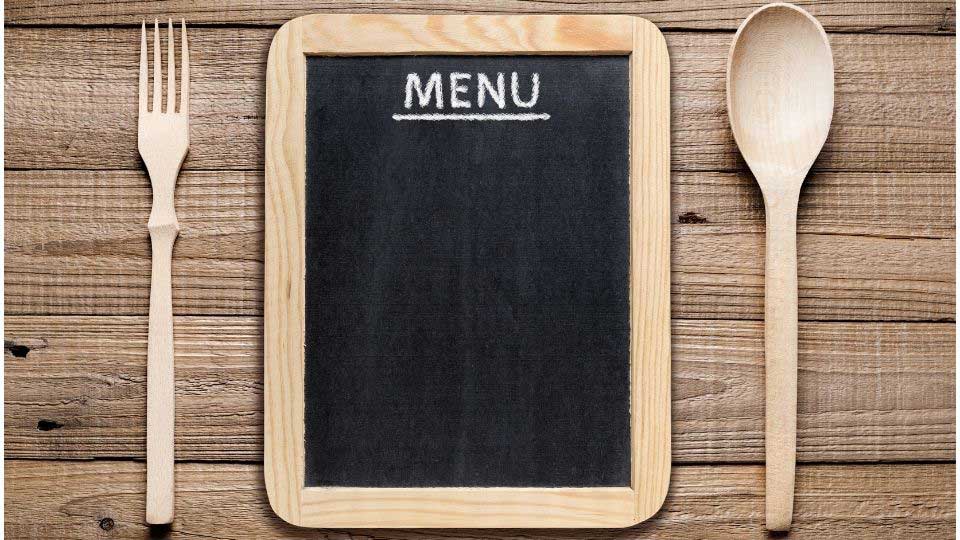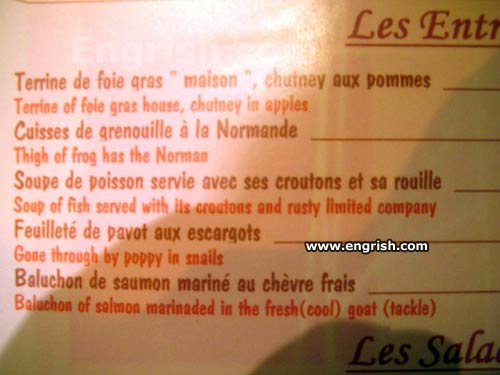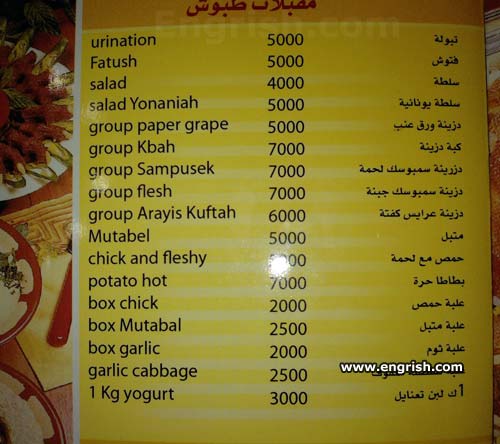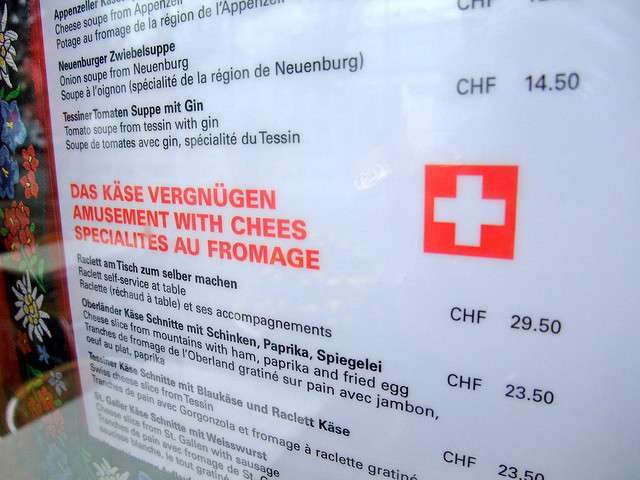
7 Good reasons for translating menus in hotel restaurants


With globalisation, a higher standard of living across the world, low-cost airfares, highly competitive hotel prices and tourist agencies that are prepared to organise all aspects of travelling abroad, people nowadays travel more often and further away from their home than ever before. This also means that the possibility of travellers understanding the language of the country they choose as their travel destination gets lower and lower.
Not knowing the language can cause many problems for tourists (or their daughters*), and one of the most frustrating is definitely ordering food in restaurants. Since the menu is the basis of communication between customers and restaurants, more and more restaurants nowadays decide to offer their customers menus that are translated into various languages. Below are 7 good reasons for hotel restaurants to do the same.
*A little personal story: My parents grew up in a time when French and Russian were the languages studied in school and since they haven’t used any of them in many decades, they have reverted to their monolingual status of Romanian speakers. A few years ago, they went on a trip to Tunisia (I may be mistaken) and my dad tried to buy (probably even haggle – not very successfully I’d say) a gift for his beloved daughter. Since the seller did not speak Romanian (why would he?) and my dad did not speak any of the languages the seller did (who was multi-lingual apparently), my dad ended up buying an overpriced hideous handbag (which still lies at the bottom of a box somewhere, never to be worn). In case you are wondering, my dad does not read the blog, nor does he speak English, so he’ll never know how I feel about the bag :).
#1: To create a good first impression
The menu is usually the first thing customers are interested in when choosing a restaurant. A menu that foreign customers can understand builds trust immediately and can thus often be the main decisive factor in choosing a hotel restaurant over numerous other options that are available to tourists. A good translation can make all the difference. A bad one can lead to laughter but also lost credibility.

Photo credit: www.engrish.com

Photo credit: www.engrish.com

Photo credit: www.engrish.com

Photo credit: James Cridland
#2: To expand customer base
According to the data on inbound tourism in the UK provided by the Office for National Statistics, there are over 30 million visits from abroad each year which add up to more than 200 million nights that foreigners spend in the UK. Looking at these numbers, it is clear that the potential for attracting foreign customers is huge – and by providing menus in various languages hotel restaurants can definitely expand their customer base greatly.
#3: To prevent customer confusion
Travellers who have travelled abroad know how frustrating it can be to eat in restaurants that do not offer their services in other languages than their native language. Only a small part of travellers fully understand the local language and even a smaller part knows about the local specialities, so choosing and ordering food often demands a lot of effort and causes a lot of confusion in the process. And confused customers are definitely not happy customers!
*Another little story (involving my parents again): Many years ago (their language skills were still limited to Romanian), they went to… (I can’t remember where, they travel a lot) and inadvertently ate certain frog parts, which they would never have done had they known what the menu said.
#4: To decrease the possibility of misunderstandings and complaints
Foreign customers that are confused about choosing and ordering food are also far more likely to complain about their food or restaurant service in general. Furthermore, misunderstandings are not only unpleasant for the customers and the restaurant staff involved, but also for other restaurant guests who might be discouraged from returning there.
Negative reviews can have a huge impact, leading to big losses, as a study has shown.
#5: To guarantee customer satisfaction
Modern tourists are very demanding. They expect restaurant and hotel services to be of the highest standards and menus that they can’t understand certainly don’t meet their high expectations. With the tourism industry being so competitive nowadays, any restaurant that doesn’t meet all customer expectations quickly faces customer dissatisfaction and, in the long-term, also lack of customers.
#6: To increase revenue
All the things potentially caused by restaurant menus not being translated in languages that foreign customers can understand – bad first impression, smaller customer base, misunderstandings, customer confusion and customer dissatisfaction – in the end translate to customers choosing other restaurants and thus decreasing the revenue of hotels. Since investment in translating menus into different languages is very small compared to the potential of increasing revenue by offering services to foreign tourists, it certainly doesn’t pay off to be too tight in this area. You know what they say, you get what you pay for (and the pictures above at #1 are pretty good examples).
#7: To preserve the reputation of both the restaurant and the hotel
Internet is a great tool for tourists to share the experience of their travels with the world. But unfortunately, if their experience is bad, it also poses a serious threat to the reputation of their chosen service providers. Tourists are also often not able to separate one single experience they had in a certain place from all other experiences and impressions, which means that dissatisfaction caused by customers not being able to understand restaurant’s menu doesn’t only hurt the reputation of the restaurant, but very likely also the reputation of the hotel in general.



3 Comments
I completely agree with the points made- although I have to say I almost always mistrust restaurants where the menu is available in several languages because they look too “touristy”.
But I also remember the frustration of not having a menu in English while I was in Hungary (it was avaliable only in Hungarian or German, which I dont’ speak),, where I had to choose randomly an item from the menu!
The same also happened in Barcelona, where I was given a menu in Catalan only- but at least I understand most of it so I could order without too many problems, and could double check in Spanish with the waiter.
Nice entry, I’m going to share it! 🙂
Thank you, Giulia. Glad you liked it. I agree, too many languages might not be a good idea. Market research is paramount, of course. Research what are the most common languages your visitors speak and translate your menu into those languages.
It is indeed frustrating when a language you speak s not available. I saw this in Romania, in Sibiu, at a pizza place (best pizza I’ve ever had): the menu was available in Romanian and German. At a table nearby there were two Asian girls who spoke neither. They did however communicate with the waiter in English, but still…
Thank you for the artical Alina. Can you direct me to any data on USA Quick Service Restaurant and translation services revenue increases, or growth?